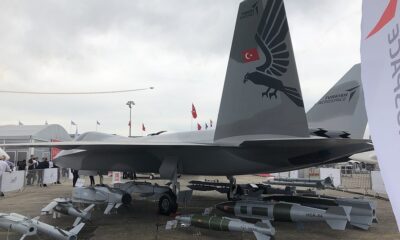Defence
China, Turkey, and Pakistan Team Up-Can Z-10ME Beat India’s LCH?

In a rapidly evolving military landscape, India and Pakistan are engaged in an aerial arms race, each strengthening their combat helicopter fleets to gain an edge in regional security.
India’s approval of a massive Rs 45,000 crore ($5.4 billion) deal for 156 Light Combat Helicopters (LCH) Prachand marks a significant step in fortifying its defenses along the China and Pakistan borders.
Meanwhile, Pakistan, in a strategic response, is planning to expand its procurement of China’s Z-10ME attack helicopters, exploring local assembly and potential collaboration with Turkey to enhance their capabilities.
The Prachand boasts a top speed of 288 kmph, a combat range of 500 km, and a service ceiling of 21,000 feet. It comes armed with air-to-air and air-to-ground missiles, a 20mm turret gun, and 70mm rockets, making it highly effective for close air support, anti-tank operations, and reconnaissance. The Indian Army variant will be equipped with Helina missiles, while the IAF version will feature Dhruvastra missiles, enhancing precision strike capabilities.
Pakistan’s Response: Z-10ME Attack Helicopters from China
In response to India’s LCH expansion, Pakistan is turning to its long-time ally, China, for an upgraded fleet of Z-10ME attack helicopters. The Z-10ME, an enhanced export variant of China’s Z-10, features a powerful WZ-9G engine, improved countermeasures, and a reduced infrared signature for greater survivability.
Pakistan aims to receive the first batch of Z-10ME helicopters in 2025, after previous failed attempts to procure the U.S.-made AH-1Z Viper and Turkey’s T129 ATAK due to geopolitical restrictions.
What sets Pakistan’s approach apart is its plan to establish a local assembly line for the Z-10ME, reducing dependence on foreign supply chains and fostering domestic defense manufacturing.
This trilateral collaboration between Pakistan, China, and Turkey aims to elevate the Z-10ME’s combat effectiveness, potentially positioning Pakistan as a future exporter of customized attack helicopters.







